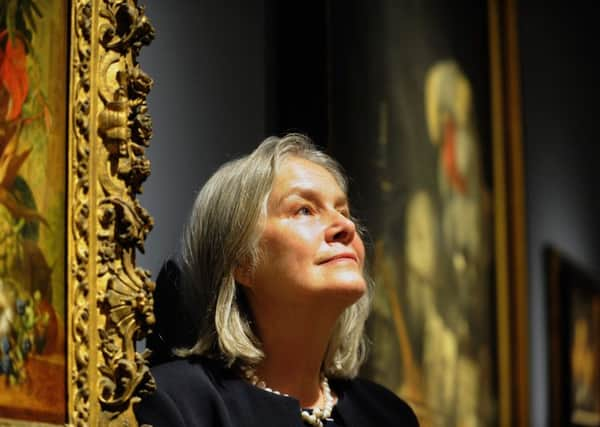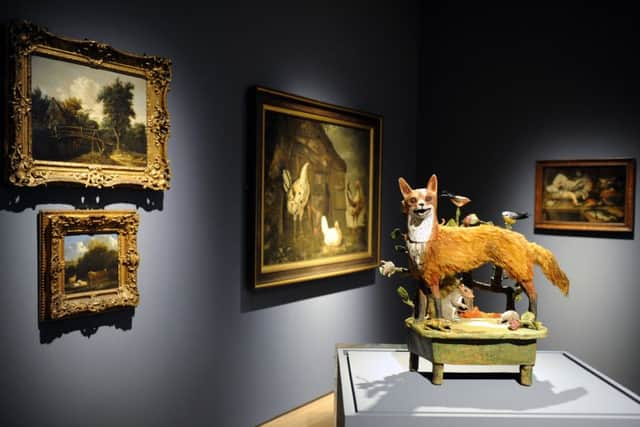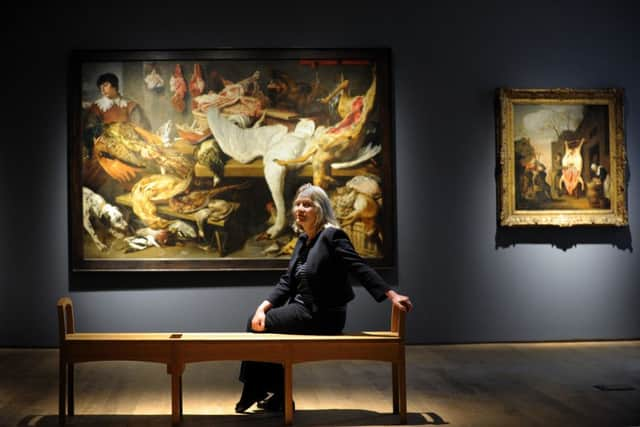A very different perspective on York


The renovation has increased the gallery’s exhibition space by more than half and is opening up a two-acre “secret” area of York, hidden for a century behind high walls.
That’s the main reason I’m here on a sweltering afternoon, with the backpacked battalions of tourists marching rather listlessly through the streets. An ice cream van outside the Art Gallery is doing healthy trade (“Rum and raisin, dear?” “Passion fruit for me!” Must be the heat).
Advertisement
Hide AdAdvertisement
Hide AdWe’ll come to Secret York in a minute, with the promise of that ever-alluring word “snickelway”. But the skeleton can’t wait. When Hearld, the York gallery’s artist in residence, bought his Georgian home on The Mount, he already knew about its discovery in 1807, by builders laying foundations.


“They found a Roman vault which contained a 7ft long sarcophagus and when they opened it they found a female skeleton inside,” he says nonchalantly. It’s still there. Isn’t it disconcerting to share a house with a skeleton? “She’s a very benign presence,” he says. “She adds to the magic of the building.”
And to the already considerable magic of his exhibition, thanks to a 19th century drawing of her, neat and tidy in her sarcophagus, together with a “tear phial” for mourners’ outpourings.
As with the other objects that have inspired the exhibition, Hearld found the drawing while exploring the York Museums collections. The result is fascinatingly offbeat, and we’ll come back to it, but Dr Janet Barnes, retiring chief executive of York Museums Trust, is waiting to take me on a preview tour of the new Secret York.
Advertisement
Hide AdAdvertisement
Hide AdSetting off from the front of the gallery in Exhibition Square, we nod to the statue of the 19th century York-born artist William Etty, easel in hand. It’s so well-weathered that he’s gradually morphing into an abstract sculpture.


To the right of the gallery, Barnes unlocks a door to reveal an alley running alongside the walls of St Mary’s Abbey. “There was always a little snickelway here, but no-one really knew about it,” she says.
Pause for explanation. Snickelways are the narrow alleys snaking between York’s buildings – snickets or gennels if you like. They’re handy escape routes for thieves, but not recommended for over-wide American tourists.
Reopened, this particular snickelway will lead to newly created gardens behind the gallery, and in turn to Marygate and, past King’s Manor car park, to the Museum Gardens. It will bring new life to dead ends and integrate parts of York in the shadow of the Minster that are close together but have been separated for decades. In the process, it will create more public space and an interesting campus of Roman, medieval and more recent architecture.
Advertisement
Hide AdAdvertisement
Hide AdThe project has involved demolishing what Barnes describes as “a really horrible lean-to, looking rather lavatorial” and rehabilitating the site of a huge wooden building that once hosted boxing matches and organ recitals. A little-used bowling green has also gone.
“I’ve been chewing over these changes for years,” she says. But, after 13 years as chief executive, she’s retiring in November. Odd timing? “Yes, it’s odd,” she admits. “But the plan was always that I’d make it happen and then leave.”
And so, through a door that used to be a window, for a preview of the newly recreated gallery. The immediate impression is of light and airy space, significantly more cheering than before. Pink granite pillars boxed in in the DIY-obsessed 1950s have been stylishly unboxed. A new garden terrace has been created and, most startlingly, the roof space has been opened up.
It gives the gallery a chance to do justice to its astonishing pottery collection – the world’s most representative collection of British studio ceramics, says Barnes.
Advertisement
Hide AdAdvertisement
Hide AdThere’s a Lowry townscape of York that proves the factory workers of Yorkshire can trudge every bit as drudgingly as those of Lancashire. Another York townscape, by Bradford-born Richard Eurich, is a Fifties fantasy uprooting buildings from across the city and jigsawing them together. The Mystery Plays unfold in the background, with Hell being Harrowed, and there’s a mystery power station on the horizon.
And, in a room all of his own, here’s Mark Hearld, putting the finishing touches to his exhibition, called The Lumber Room. Its subtitle, Unimagined Treasures, is a phrase he remembers from a short story by Saki read to him when he was 15.
He’s long been intrigued by the idea of a locked room containing treasure so wonderful that you can’t imagine it. It’s what the archaeologist Howard Carter and his patron Lord Carnarvon experienced when they discovered Tutankhamun’s tomb.
Hearld’s commission has allowed him, he says, “to run fast and loose and be spectacularly miscellaneous” with the York collections, selecting appealing pieces, many never before displayed, and creating “playful juxtapositions”.
Advertisement
Hide AdAdvertisement
Hide AdThere’s a row of portraits of a 17th century family, which he pairs with fairground horses from the Castle Museum. There’s a Leeds Pottery horse with mad eyes, scarlet Victorian military tunics, Georgian dog collars, 19th century pincushions, made by men and offered as love tokens... all told, a real cabinet of curiosities.
Or, as Carter said when Carnarvon asked him what he could see inside the boy king’s tomb: “Wonderful things.”